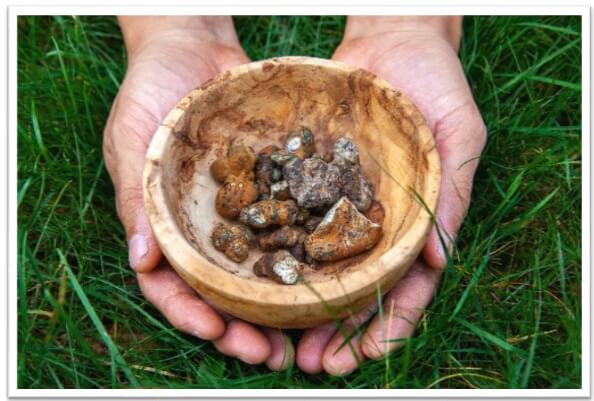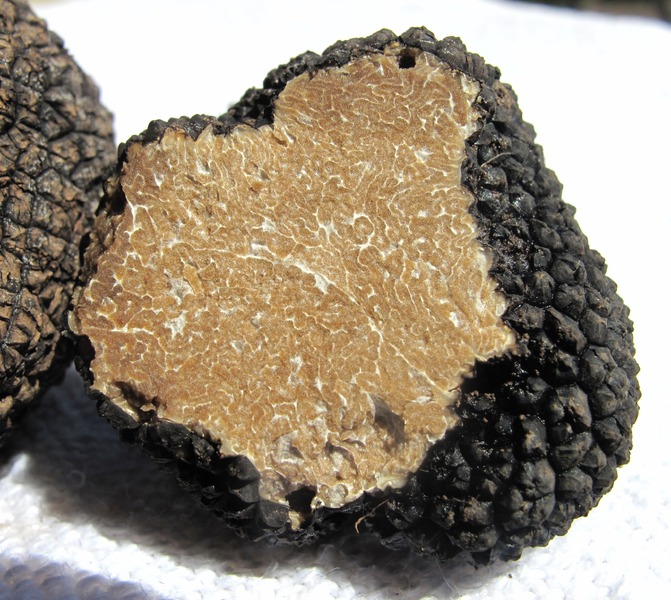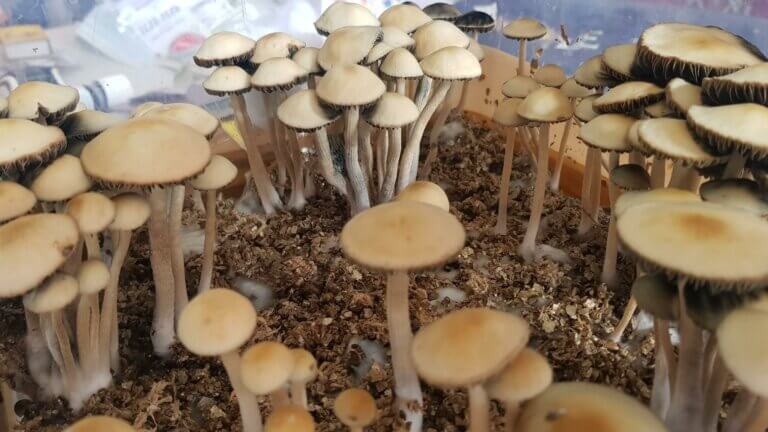Differences between magic truffles and hallucinogenic mushrooms
List of contents
Most of people have very associated the psychedelic trip with the image of the mushroom. This has an obvious and easy explanation since it is usually the most used means to perform them. Or not? Bearing in mind that the place in Europe where the most endogenous energy is concentrated is surely Amsterdam, we might think that more trips are made with truffles than with the magic mushrooms themselves.
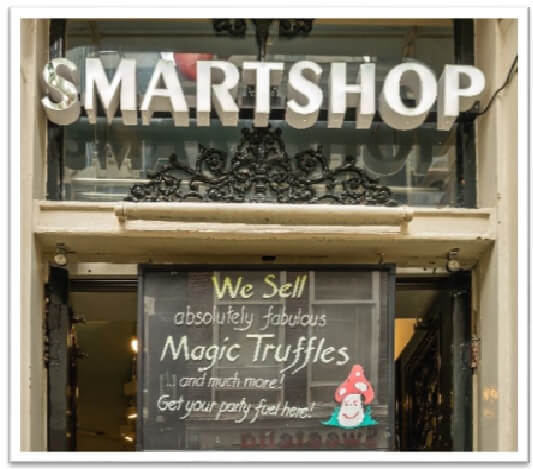
When and why did "truffles" appear?
All this comes from the fact that truffles were an ingenious move by Dutch SmartShops when fresh mushrooms were outlawed in 2008, branding them as a psilocybin preparation, as was already the case with dried mushrooms (the sale was made illegal in 2001). As a consequence of this law, and seeing all the amendments they presented revoked, SmartShops were quick to react and put the famous truffles or sclerotia on sale, since they were an uncontrolled fungal species.
If we talked to a mycologist, they would tell us that what is usually known as a magic truffle really isn't. Technically they are sclerotia. Therefore, and logically, we must first know how to differentiate between a "magic truffle" and a real truffle, the kind that is usually used in cooking.
What are magic truffles?
Let's start with the Sclerotia, wrongly called magic truffles (because of "truffles", they do are magical). These are a compact mass of hardened mycelium, where food reserves are contained. It is a method of survival of the mycelium itself since its function is to survive under extreme environmental conditions, remaining dormant until favorable conditions appear.
On the other side, we have the truffle. It is the fruiting body of some fungi (the method of reproduction, just as mushrooms would be) that develops underground. It consists of two parts: The peridium, the shell of the truffle (rough, with small warts); and the gleba, the interior mass filled with fine creamy white veins (where the spores are housed). Since time immemorial, magical and aphrodisiac powers have been attributed to it, being one of the most sought-after products in the world by humans, pigs, and dogs.
Differences between mushrooms and truffles
Once we understand what we mean when we talk about "magic truffles" we can now return to the main topic of the post: The difference between mushrooms and magic truffles. There are many differences that can be found since, as we have seen, one is about a fruiting body and the other a technique for preserving the mycelium itself. But this blog is not about advanced mycology, it is intended for home-growers and intrigued consumers. Thus, in our case, the most notable differences could be separated into three large groups:
- Morphological differences: Differences in the structure of the organism and its characteristics.
The differences in cultivation: This point, like all the others, is focused on the home grower. - An attempt is made to explain what differences we will find between them, both in growth method and in harvesting.
- The differences in the effect: Finally, the differences when ingesting mushrooms or truffles. Among them is the amount of psilocybin, duration of the trip, or method of consumption.
Morphological differences between magic mushrooms and magic truffles
We have previously defined the morphology of the magic truffle or sclerotium, which is a mass of mycelium. Instead, the mushroom is a more developed organism. Its essential parts that any amateur mycologist should know are the following: the cap, which is the upper part of the mushroom, remains closed and is where the spores are stored until they open, when they spread around. 'Shrooms also have a stem, and the end where it connects the mushroom to the mycelium is called the volva.
It must also be said that they vary a lot depending on the species or genera being analyzed. The hat can go from 3 mm to 30 cm, with the foot varying in a similar way. For example, Psilocybe Cubensis such as the Psilocybe Penis Envy or the Psilocybe Alcabenzi, usually have a hat of about 5-10 cm, while the Copelandia never exceeds 3 cm in diameter.
About this second variety, the Copelandia (or Panaeolus Cyanescens), there is much less information, so we have seen fit to dedicate a post to it. Once explained the morphological differences, we only have to explain the differences in cultivation and consumption.
Differences between Panaeolus Cyanescens (Hawaiian Copelandia) and Psilocybe Cubensis
Most varieties of hallucinogenic mushrooms currently on the market come from of Psilocybe cubensis. In this article we compare this variety with Panaeolus Cyanescens (or Copelandia), which has been gaining a reputation for all the mycologists who discover it due to its Psilocybin content. This is 4 times more powerful than that of any Psilocybe Cubensis or similar. Homegrower mycologist, welcome to a new tomorrow.
Differences in cultivation between hallucinogenic mushrooms and truffles
In cultivation, there are many differences that separate one from the other. In the first place, the sclerotia are born inside the substrate (or underground) therefore, only one harvest can be done. Instead, mushroom kits can drop 3 batches of mushrooms that can be collected without damaging the substrate. Add that the sclerotic mushrooms usually take about three months to be ready, as opposed to the 3 weeks in which the first mushrooms will begin to be ready.
Of course, some points in favor of growing magic truffles instead of mushrooms can be: a great resistance to external factors such as heat or dehydration, besides being discreet when growing.
Differences in effect between magic mushrooms and magic truffles
In terms of effect, they tend to generate similar amounts of psilocybin, but what makes the difference is the percentage of water each contains. Being much higher than that of the mushroom means that when fresh, truffles contain more psilocybin per gram. On the other hand, once dried, hallucinogenic mushrooms can lose up to 90% of their total weight, while truffles will lose up to 30%. This will result in the need for far fewer mushrooms than truffles if both are dry.
A differential point within the effects is that the magic truffle tends to have the psilocybin distributed much more evenly throughout its entire structure, which makes it a better option for those who are looking to microdose with psilocybin. To do it in the most professional way possible, in our store you can find the Microdosing Kit and the PSILO Q-Test, to measure the amount of psilocybin per gram of the samples.
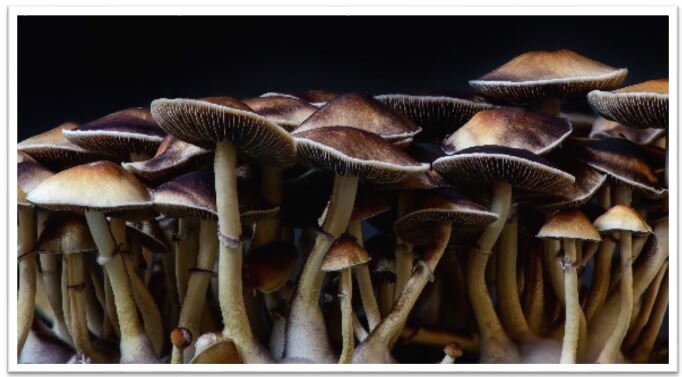
Conclusions
After carrying out the pertinent search for this article and discovering the benefits and harms of one for the other, at Alchimia we came to the conclusion that truffles are only good for what they were popularized for. To be used as a substitute for the endogenous mushroom when it cannot be obtained, as it is much more controlled and persecuted than the first.
The first reason why we cling to this thought is because of its difficulty in cultivation, not so much in practice but more in technique. That is to say, it is not much more difficult to grow truffles than mushrooms, but the long wait compared to that of the Psilocybes is very pronounced, going from the 3 months that the truffle will take compared to the 3 weeks of the endogenous mushroom.
Another reason is consumption. It is true that the truffle has some property that makes it more optimal for fresh consumption, but once dried, the mushrooms contain much more psilocybin per gram by losing up to 90% of their weight, so you should eat less.

















































